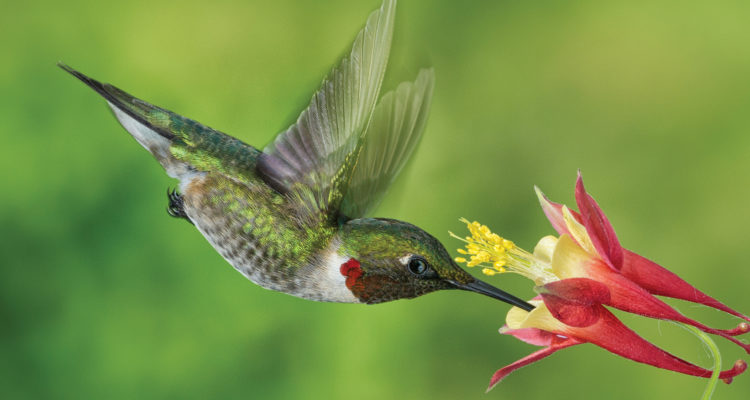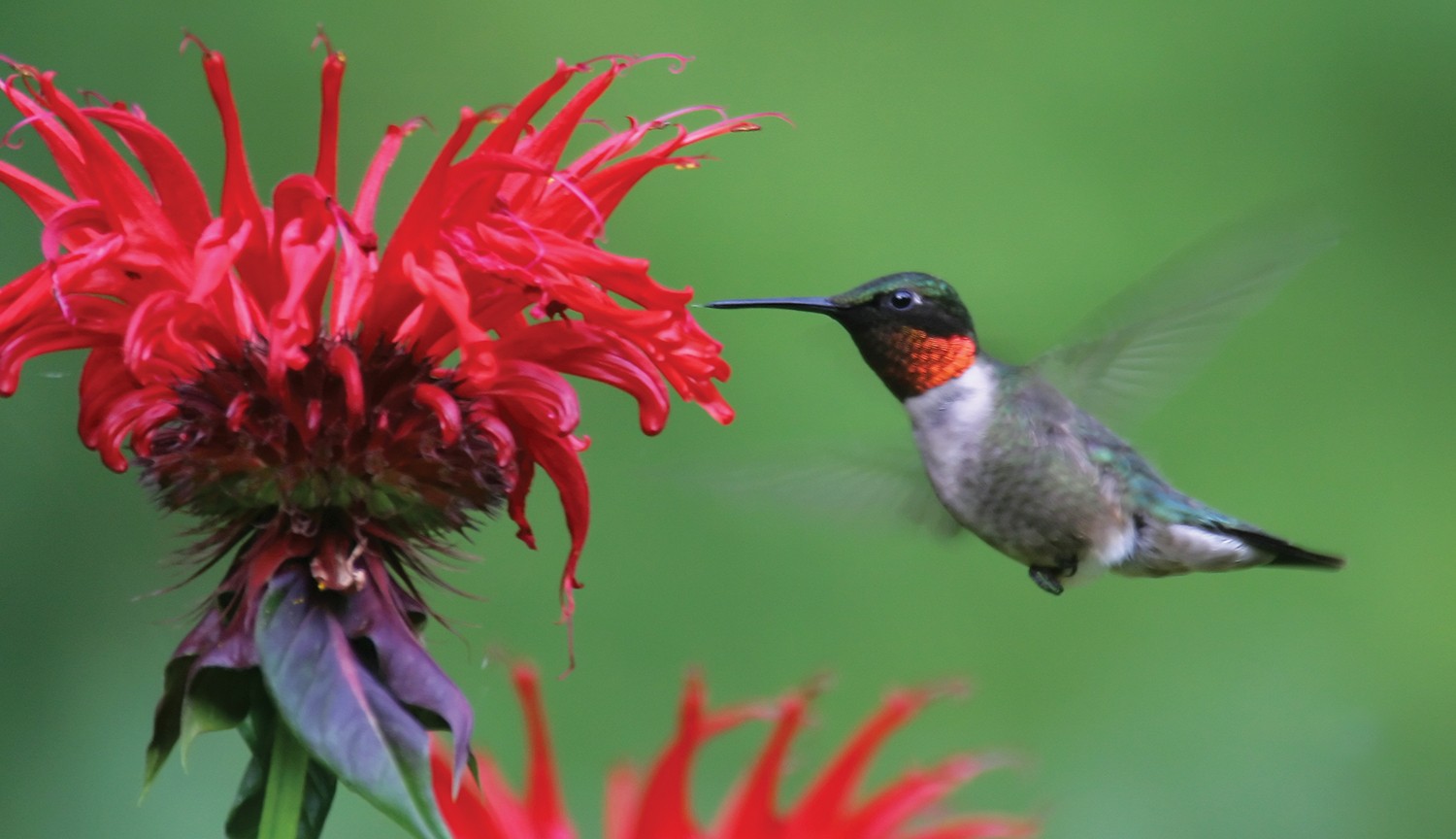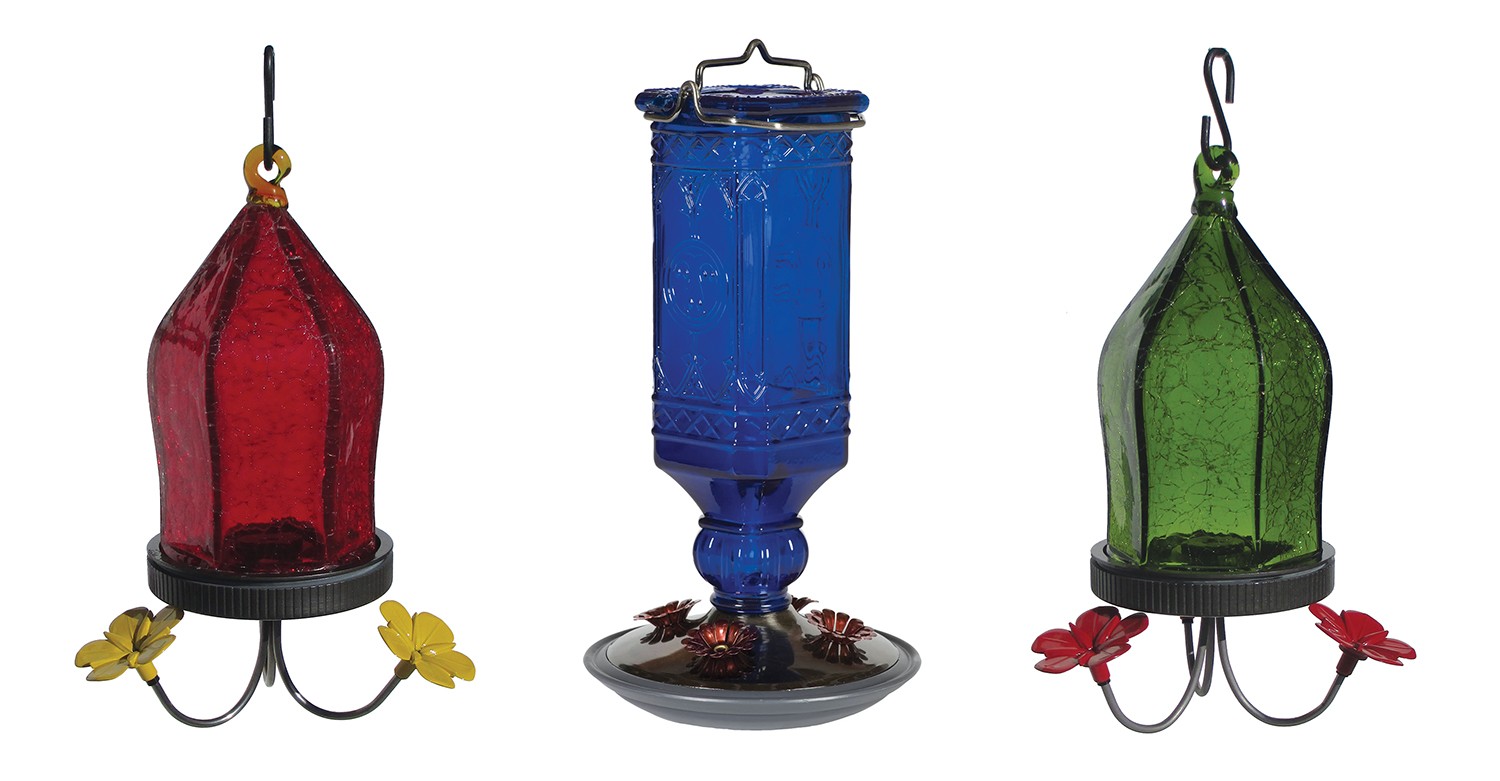Hummingbirds have been captivating people for years.
Learn how to create a hummingbird sanctuary with these tips and tricks.
Story by Paige Schick
Owner of Wild Birds Unlimited in Leawood, Kansas, Nik Hiremath, shared his expertise about attracting hummingbirds to your own backyard.
Creating a Hummingbird Haven
Hummingbirds use their swift speed to visit over one thousand flowers per day for nectar. Just like all birds, hummingbirds have no sense of smell; they find their food by sight. As a result, hummingbirds look for bright colored flowers. Including vivid annuals in your backyard like Petunias or Lady in Red Salvia (Scarlet Sage) help to attract hummingbirds to feed. The tubular flowers on Honeysuckle trees and Mimosa shrubs assist in drawing hummingbirds to your backyard as well because of their flower shape. Cannas bulbs are also good at inviting hummingbirds because of their vibrant red color — hummingbirds’ favorite color.
Tiny Bird, Big Purpose
Although hummingbirds are the smallest birds in the world, they hold great responsibilities. The Ruby-throated Hummingbird (Archilochus colubris) is native to Kansas and plays a significant part in the local ecosystem.
Hummingbirds hold two primary purposes. One is to pollinate. Hummingbirds visit over one thousand flowers per day collecting nectar. They pollinate by rubbing their forehead and face in each flower as they get the nectar. Furthermore, hummingbirds are very intelligent and can remember exactly which flowers they have visited and how long each flower will take to refill its nectar. Secondly, besides drinking the nectar from flowers, hummingbirds eat insects. This helps to keep the ecosystem balanced as they assist in keeping the insect population at the right levels.
Dinner Is Served
Vibrantly colored feeders can attract hummingbirds. Specified feeder parts, like a nectar port, further aid in attracting hummingbirds. There are two types of feeders: gravity fed style and a reservoir style. The more common of the two is the gravity fed style, but it is sometimes prone to leaking. Wild Birds Unlimited expert Nik Hiremath mentioned, “Reservoir style feeders have the added benefit of not leaking because there’s room for expansion of the sugar solution and it’s not constantly being pressured against the nectar port.”
Once you’ve found the perfect hummingbird feeder, a simple mixture of four parts water to one part sugar will complete the hummingbird haven. Do not use artificial sweeteners, sugar substitutes, or any dyes in the sugar solution, as it could be harmful to the hummingbirds.
After you’ve created an impeccable hummingbird habitat, all you have left to do is sit back, relax, and enjoy the wonders of these tiny birds.









